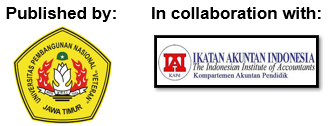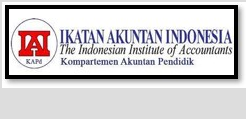Defining and Classifying Corporate Social Costs: An Initiative to Enrich the Thought of Accounting for CSR
DOI:
https://doi.org/10.33005/jasf.v8i1.487Keywords:
Accountants' Point of View, Codified and Uncodified Desires, CSR, Disclosure-Society-Business, Economists' Point of View, Social CostsAbstract
Purpose: This desk research aims to provide a clear and precise definition of the term "corporate social costs (CSCs)" from the perspective of accountants and to determine a set of standards by which CSCs may be separately identified from corporate economic cost (CECs).
Method: Rational thinking and logical reasoning are frequently used in theoretical studies that seek to advance and strengthen the theoretical framework of any major in the social sciences, including accounting and economics. Therefore, in order to accurately define and classify direct and indirect CSCs, the research adopts two different approaches: To define and classify indirect CSCs, the research adopted the "External Damage Approach Resulting from the Economic Activities of Companies." To define and classify direct CSCs, the research adopted the "Supporting Social Responsibilities Approach. "The characteristics of direct CSCs can be inferred by studying the nature of the obligation to incur these costs, the role they play, the impact they have, the justifications that justify them, the benefits they achieve, and the beneficiaries. Through the characteristics of direct CSCs, the criteria for distinguishing between CSCs and CECs can be determined.
Findings: This research is not merely about finding a new, more specific definition related to CSC and CEC, but has been able to establish a set of criteria to distinguish between CSC and CEC.
Novelty/Value: Because there aren't many publications in this area, this research is regarded as a contribution to the field of CSR accounting theory. The results of this research will improve businesses' capacity to truthfully report on their social performance. In terms of education, this research will clear up any confusion students might have on what CSCs mean.
Downloads
References
Abu Samra, H. A. S (2009). Obstacles to disclosing social responsibility in the reports of public joint-stock companies listed on the Palestine Stock Exchange. Research submitted to fulfill the requirements for obtaining a master’s degree in accounting and finance. Islamic University of Gaza.
Ahmed,R. A., Muhammad, A. O. & Abdul Karim, B. A (2018). A field study on a sample of commercial banks in Sulaymaniyah Governorate and the Garmian Administration: Accounting for social responsibility and its role in improving the quality of banking services. Scientific Journal of China University - Sulaymaniyah. (2),1, 111-130. https://sj.sulicihan.edu.krd/files/2018/02/a88.pdf.
Akinpelu, Y.A., Ogunbi, O.J., Olaniran, Y.A. & Ogunseye, T.O. (2013), Corporate social responsibility activities disclosure by commercial banks in Nigeria, European Journal of Business and Management, Vol. 5 No. 7, pp. 173-185.
Al-Fadl, M., Nour, A.& Al-Dawjaji, A. (2002). Contemporary Accounting Problems, Dar Al-Masirah for Publishing, Distribution and Printing, Amman, Jordan.
Al-Ghazwi, H. A. (2010). Contemporary accounting problems. Arab Academy in Denmark. Department of Accounting.
Al-Humaidi, S. H. (2017). Analysis of the concept of social costs and the problems of measuring them. College of Administrative Sciences, Kuwait University. Retrieved from https://atasu.journals .ekb.eg/ article_41517 _2356a9c637fd 6122 b108 b88501eb134b.pdf.
Al-Shirazi, A. M. (1990). Accounting Theory, 1st Edition, Al Salasil Printing, Publishing and Distribution, Kuwait.
Asemah, E. S. (2022). Understanding Corporate Social Responsibility. Franklead Printing and Publishing Co. ISBN: 978-978-945-710-6
Ashforth, B. & Gibbs, B., (1990). The double-edged of organizational legitimation. Organization Science 1, 177-194.
Balakrishnan, R., Sivaramakrishnan, K. & Sprinkle, G. B. (2008). Managerial Accounting. NewYork: John Wiley& Sons, Inc.
Bazmawy, M. H. (2002). Measurement and Disclosure of Social Measures in Industrial Establishments, unpublished Master’s thesis, University of Aleppo, Syrian Republic, 2002.
Bin Hamada, A. & Bourkaib, Nasr al-Din (2 February, 2022). Obstacles to applying social responsibility accounting as a foundation for embodying the dimensions of sustainable development in Algerian institutions. The American International Journal of the Humanities and Social Sciences.
Boulasnam, M., & Ben Faraj, Z. (2012, 02 14-15). Factors affecting social disclosure: A case study of the Arab Potash Joint Stock Company. An intervention presented to the International Forum “Business Organizations and Social Responsibility,” Taheri Muhammad Bashar University.
Branco, M.C. & Rodrigues, L.L. (2008), “Factors influencing social responsibility disclosure by Portuguese companies”, Journal of Business Ethics. 83 (4), 685-701.
Brown, N. & Deegan, C. (1998). “The Public Disclosure of Environmental Performance Information – A Dual Test of Media Agenda Setting Theory and Legitimacy Theory”. Accounting and Business Research. 29(1), 21-41.
Cabeza-García, L., Fernández-Gago, R. & Nieto, M. (2018). Do Board Gender Diversity and Director Typology Impact CSR Reporting? Eur. Manag. Rev., 15, 559–575.
Carroll, A.B. (1979). A Three-Dimensional Conceptual Model of Corporate Performance, Academy of Management Review. 4(4), 497–505.
Carroll, A. B. (1991). The Pyramid of Corporate Social Responsibility: Toward the Moral Management of Organizational Stakeholders, Business Horizons 34, 39–48.
Carroll. A. B. & Shabana K. M. (2010). The Business Case for Corporate Social Responsibility: A Review of Concepts, Research and Practice, p. 85-105.
Carroll, A. B. (2016). Carroll’s Pyramid of CSR: Taking Another Look, International Journal of Corporate Social Responsibility. 1(1), 1-8.
Čavalić, A. & Bećirović, D. (2018). Employee Perception of Corporate Social Responsibility in Bosnia and Herzegovina. Poslovna Izvrsnost Zagreb, God. XII (2018) BR. 1. https://doi.org/10.22598/pi-be/2018.12.1.117.
CEC (2001). GREEN PAPER Promoting a European framework for Corporate Social Responsibility. Retrieved from https://eur-lex.europa.eu/LexUriServ/LexUriServ.do?uri=COM:2001:0366:FIN:EN:PDF.
Chiang, C.S. (2010). How corporate social responsibility influences employee job satisfaction in the hotel industry. UNLV Theses. Dissertations, Professional Papers, and Capstones, Las Vegas: University Libraries, University of Nevada.
Coffie, W., Aboagye-Otchere, Francis & Musah, A. (2018). Corporate social responsibility disclosures (CSRD), corporate governance, and the degree of multinational activities: Evidence from a developing economy. Journal of Accounting in Emerging Economies. 8 (1), 106-123, https://doi.org/10.1108/JAEE-01-2017-0004.
Costa, R. & Menichini, T. (2013). A multidimensional approach for CSR assessment: The importance of the stakeholder perception. Expert Systems with Applications. 40(1), 150 – 161. https://doi.org/10.1016/jeswa.2012.07.028.
Davis, K. & Frederick,W. С. (1984). Business in Society, 5th ed., McGraw, Hill, New York.
Davis, O. A. & Whinston, A. (1992). Externalities, Welfare, and the Theory of Games.Journal of Political Economy. 70(3), 241-262.
Deegan, C. (2002). Introduction: The legitimising effect of social and environmental disclosures-a theoretical foundation, Accounting, Auditing & Accountability Journal. 15 (3), 282-311.
Dilley, Steven C. & Weygandt, Jerry J. (1973). Measuring Social Accounting, An Empirical Test. The Journal of Accountancy- September 1973 pp.62-70.
Dunn,C. P. & Burton, B. K. (2006). Friedman's The Social Responsibility of Business Is to Increase Its Profits: A Critique for the Classroom. Conference: International Association for Business and Society. https://www.researchgate.net/publication/288713811_Friedman's_The_Social_Responsibility_of_Business_is_to_Increase_Its_Profits_A_Critique_for_the_Classroom.
Estes, R.W. (1976). Corporate Social Accounting, John Wiley & Sons, New York.
Feltovich,N., Slonim,R. & Briscese, G. (3 Apr. 2021). The hidden costs of corporate social responsibility. Retrieved from https://cepr.org/voxeu/columns/hidden-costs-corporate-social-responsibility.
Freeman, R. E. (1984). Strategic Management: A Stakeholder Approach, Pitman, Boston.
Freeman, R. E. (2009). Managing for stakeholders. In T. L. Beauchamp, N. E. Bowie, & D. G. Arnold (Eds.), Ethical Theory and Business (8th ed., pp. 56–68). Upper Saddle River: Pearson Prentice Hall.
Friedman, M. (1970). The Social Responsibility of Business Is to Increase its Profits, New York Times, 1970, 122-126.
Ghozali, Imam, & Anis Chariri. (2007). Accounting Theory. Semarang: Diponegoro University Publishers Agency.
Gray, R., Reza K., & Simon L. (1995). Constructing a Research Database of Social and Environmental Reporting by UK Companies. Accounting, Auditing & Accountability Journal. Volume 8. Page. 78-101.
Haataja, D. (2020). Stakeholder Theory: The New Story of Business. Department of Business Studies. Uppsala University.
Hanan, R. H. (2003), Alternatives to Contemporary Accounting Measurement, Wael Publishing House, Amman Jordan.
Hooghiemstra, R. (2000). Corporate communication and impression management – new perspectives why companies engage in corporate social reporting, Journal of Business Ethics, 27 (Nos 1-2), 55-68.
Hopkins, M. (2014). What is Corporate Social Responsibility all about? Journal of Public Affairs. 6(3-4), 298 – 306. https://doi.org/10.1002/pa.238.
Hu, Y.Y., Zhu, Y., Tucker, J. & Hu, Y. (2018). Ownership influence and CSR disclosure in China. Account. Res. J. 2018, 31, 8–21.
Ibanga, D.A. (2018), Is there a social contract between the firm and community: Revisiting the philosophy of corporate social responsibility? International Journal of Development and Sustainability, 7 (1), 355-380.
Iheduru, N. G. & I. R. Chukwuma (2019). Effect of environmental and social cost on performance of manufacturing companies in Nigeria. International Journal of Accounting & Finance Review 4(2): 5-12.
Ismail, M. (2009). Corporate Social Responsibility and Its Role in Community Development: An International Perspective. The Journal of International Social Research. 2 (9),199-209.
Kapp, K. W. (1975). The Social Costs of Private Enterprise. Schocken Books, New York.
Khaddour, R. (2011). Social responsibility of the business sector. The twenty-fourth economic symposium on economic and social development in Syria. Syrian Economic Sciences Association. Retrieved from https://www.csrsa.net/sites/default/files/11-khadour.pdf.
Kotler, P., & Lee, N. (2005). Corporate Social Responsibility. Hoboken, John Wiley & Sons, Inc.
Laskar, T. (2020). What Lies Behind the Formation of Corporate Social Responsibility Activities in the Automotive Industry: A Study on the Disclosure Practices at Volvo Cars. Uppsala University.
Leguel, S. & Zamali, N. (2016). Social responsibility: concept, dimensions, standards. Journal of Humanities and Social Sciences. Issue No. 27 December 2016. 301 – 308. Retrieved from https://dspace.univ-ouargla.dz/jspui/bitstream/123456789/13539/1/S2722.pdf.
Lin-Hi, N. (2010). The problem with a narrow-minded interpretation of CSR. Why CSR has nothing to do with philanthropy. Ramon Llull Journal of Applied Ethics, 1(1), 75-95.
Liu, X. & Anbumozhi, V. (2009), Determinant factors of corporate environmental information disclosure: an empirical study of Chinese listed companies, Journal of Cleaner Production. 17 (6), 593-600.
Luce R.A., Barber A.E. & Hillman A.J. (2001). Good Deeds and Misdeeds: A Mediated Model of the Effect of Corporate Social Performance on Organizational Attractiveness. Business & Society. 40 (4), 397 – 415.
Mahmud, A., Ding, D., & Hasan, Md. M. (2021). Corporate Social Responsibility: Business Responses to Coronavirus (COVID-19) Pandemic. SAGE Open, 11(1). https://doi.org/10.1177/2158244020988710.
Maignan I., Ferrell O.C. & Hult T.M. (1999). Corporate Citizenship: Cultural Antecedents and Business Benefits. Journal of the Academy of Marketing Science. 27 (4), 455-469.
Margolis, J. D., & Walsh, J. P. (2003). Misery Loves Companies: Rethinking Social Initiatives by Business. Administrative Science Quarterly, 48(2), 268-305. https://doi.org/10.2307/3556659.
Matten, D. & Crane, A. (2005) Corporate Citizenship: Toward and Extended Theoretical Conceptualization. Academy of Management Review, 30, 166-179. https://doi.org/10.5465/AMR.2005.15281448.
Matten, D., & Moon, J. (2008). “Implicit” and “explicit” CSR: A conceptual framework for a comparative understanding of corporate social responsibility. Academy of Management Review. 33(2), 404-424.
McWilliams, A., Siegel, D. S., & Wright, P. M. (2006). Corporate social responsibility: Strategic implications. Journal of Management Studies, 43(1), 1-18. https://doi.org/10.1111/j.1467-6486.2006.00580.x.
Mebarki, L. (2020). Business Ethics and Corporate Social Responsibility – Analytical Study of North Africa and the Middle East (MENA)Region. Economic and Management Research Journal. 14(3), 19-40.
Miles, S. (2011). Stakeholder: Essentially Contested or Just Confused? Journal of Business Ethics. (108)3, 285-298.
Mishan E. J. (1967). The costs of economic growth. Middlesex, England Penguin Books Ltd.
Mohamed, A. F. (19801979). Directions of accounting thought in the field of Social Responsibility Accounting. Journal of The College of Administrative Sciences, University of Riyadh .19791980:19-49.
Neves, V. (2018). The Theory of Social Costs of K. William Kapp: Some Notes on Sebastian Berger’s The Social Costs of Neoliberalism. To be published in the Forum for Social Economics. May 2018. https://doi.org/10.1080/07360932.2018.1481127
Ofurum, C. O., & Ngoke, O-S. (2022). Corporate Social Responsibility Cost and Financial Performance of Listed Oil and Gas Firms in Nigeria. Archives of Business Research, 10(05). 65-77.
Ogedengbefor, F.A. & Chinyere, O.M (2022). Corporate Social Responsibility Cost and Financial Performance in Selected Companies Quoted in Nigeria Stock Exchange 2010-2019. Sarcouncil Journal of Economics and Business Management. 1(1), 18-41.
Onaiza, H. H. & Ali, M. N. (2013). The effect of disclosing social responsibility in financial statements on the decisions of users of these statements: An applied and exploratory study. Al-Ghari Journal of Economic and Administrative Sciences. 9 (26), 153-189. University of Kufa, College of Administration and Economics.
Orlitzky, M., Schmidt, F.L. & Rynes, S.L. (2003) Corporate Social and Financial Performance: A Meta-Analysis. Organization Studies, 24, 403-441. http://dx.doi.org/10.1177/0170840603024003910.
Pigou, A. C. (1960). The Economics of Welfare. London. Macmillan. and company. 4th Edition.
Porter, M.E. (1985). Competitive Advantage: Creating and Sustaining Superior Performance, The Free Press, New York, NY.
Rasche, A., Morsing, M., & Moon, J. (2017). The Changing Role of Business in Global Society: CSR and Beyond. In A. Rasche, M. Morsing, & J. Moon (Eds.), Corporate Social Responsibility: Strategy, Communication, Governance (pp. 1-30). Cambridge University Press.
Ridi, R. (2023). Corporate Social Responsibility Disclosure (CSRD) In Literature Study. Proceeding International Conference on Economic Business. Management, and Accounting (ICOEMA)-2023. Economics Doctoral Study Program. University of 17 August 1945 Surabaya-2023.
Rose, M. A. & Hach, G. (2024). Three Ways Companies Pollute the Environment and Your Health. Hach & Rose, LLP. https://www.Unionlawfirm.com/defective-drugs-product-attorneys/asbestos/three-ways-companies-pollute-the-environment-and-your-health/.
Šain, M. (2021). Corporate Social Responsibility in Times of Crisis: COVID-19. EU and Comparative Law Issues and Challenges Series (ECLIC), 5, 706–727. https://doi.org/10.25234/eclic/18348.
Salama, N. F. (1999). Research in Accounting and Social Auditing, 2nd edition, Al-Galaa Modern Library, Port Said, Egypt.
Saleh, B., Moulay El-Arabi, T. & Moulay Mustafa, B. (2016-2017). The role of accounting for social responsibility in evaluating financial performance. Faculty of Economic, Commercial, and Management Sciences. Ahmed Draya Adrar University – Algeria.
Saleh, Y. A. B. (2022). Using the Concept of Precedence as an Approach to Explain the Logical Interaction and Interrelationships among Corporate Social Responsibilities: Battal’s CSR Train VS. Carroll ′s CSR Pyramid. Universal Journal of Business and Management, 2(1), 1–37. Retrieved from https://www.scipublications.com/journal/index.php/ujbm/article/view/484.
Samuelson, P. A. (1971, Spring). Love that Corporation. Mountain Bell Magazine.
Schwartz, M. S., & Carroll, A. B. (2003). Corporate Social Responsibility: A Three-Domain Approach. Business Ethics Quarterly, 13(4), 503–530. https://doi.org/10.2307/3857969.
Sjostrand, N. (2010). Do Companies Attract Quality Work Force Through CSR - Experience of Two Swedish MNCs. Master thesis. Lulea University of Technology.
Solikhah, B. (2016). An Overview of Legitimacy Theory on The Influence of Company Size and Industry Sensitivity Towards CSR Disclosure. I J A B E R, 14(5), 3013-3023.
Spangler, I. S., & Pompper, D. (2011). Corporate social responsibility and the oil industry: Theory and perspective fuel a longitudinal view. Public Relations Review, 37(3), 217-225. https://doi.org/10.1016/j.pubrev.2011.03.013
Sprinkle, G. & Maines, L. (2010). The Benefits and Costs of Corporate Social Responsibility. Business Horizons, 53, 445-453. https://doi.org/10.1016/j.bushor.2010.05.006.
Strand, R. & Freeman, R.E. (2015) Scandinavian Cooperative Advantage: The Theory and Practice of Stakeholder Engagement in Scandinavia, Journal of Business Ethics. 127(1), 65-87.
Sundaram, A.K. & Inkpen, A.C. (2004). The Corporate Objective Revisited, Organization Science, 15(3), 350-363.
Tai, Lai Van, Xuan,Le Thi Thanh & Anh, Truong Thi Lan (2013). Applying Carroll’s CSR pyramid in studying employees’ perceptions of corporate social responsibility. Science & Technology Development. 16(Q2), 67-77.
Terziev, Venelin (2019). The Role of Business in Society. University of Agribusiness and Rural Development. IJASOS- International E-Journal of Advances in Social Sciences, Vol. V, Issue 14, August 2019 http://ijasos.ocerintjournals.org/tr/download/article-file/799043.
Turban, D.B. & Greening, D.W. (1997). Corporate Social Performance and Organizational Attractiveness to Prospective Employees. The Academy of Management Journal 40(3), pp. 658-672.
Ude, M. E., Nwoha, C. & Okwo, I. M. (2021). Effect of Corporate Governance Practices on Corporate Social Responsibility Cost of Oil and Gas Firms in Nigeria. Advance Journal of Management and Social Sciences. 5 (5), 25-50.
Weshah, S. R., Dahiyat, A. A., Awwad, M. R. A., & Hajjat, E. S. (2012). The impact of adopting corporate social responsibility on corporate financial performance: Evidence from Jordanian banks. Interdisciplinary Journal of Contemporary Research in Business, 4(5), 34–44.
World Business Council for Sustainable Development (WBCSD) (2000) Corporate social responsibility: making good business sense. World Business Council for Sustainable Development, Geneva. World Economic Forum: https://www.weforum.org/agenda/2021/01/klaus-schwab–onwhat-is-stakeholder-capitalism-history-relevance/
Yasir, H. & Amjad, S. A. (2021). Role of Carroll’s CSR Pyramid in Shaping Consumer Buying Behavior: A Case of Detergent Industry of Pakistan. The Lahore Journal of Business. 9(2),109–140. Retrieved from https://repository.lahoreschool.edu.pk/xmlui/handle/123456789/17339
Yoo, J., Lee, M. K., & Lee, W. S. (2016). Asymmetrical corporate responses to economic information: Applying the firm size effect. Journal of Administrative and Business Studies, 2(1): 35-47. https://doi.org/10.20474/jabs-2.2.5
Zarefar, A. & Sawarjuwono, T. (2021). Corporate Social Responsibility: Theory, Practice and Its Impact on the Company. Jurnal Akuntansi Keuangan dan Bisnis. 14(1), 103-112.
Zhang, Y. & Yang, F. (2021). Corporate Social Responsibility Disclosure: Responding to Investors’ Criticism on Social Media. Int. J. Environ. Res. Public Health 2021, 18, 7396. https://doi.org/10.3390 ijerph18147396.













